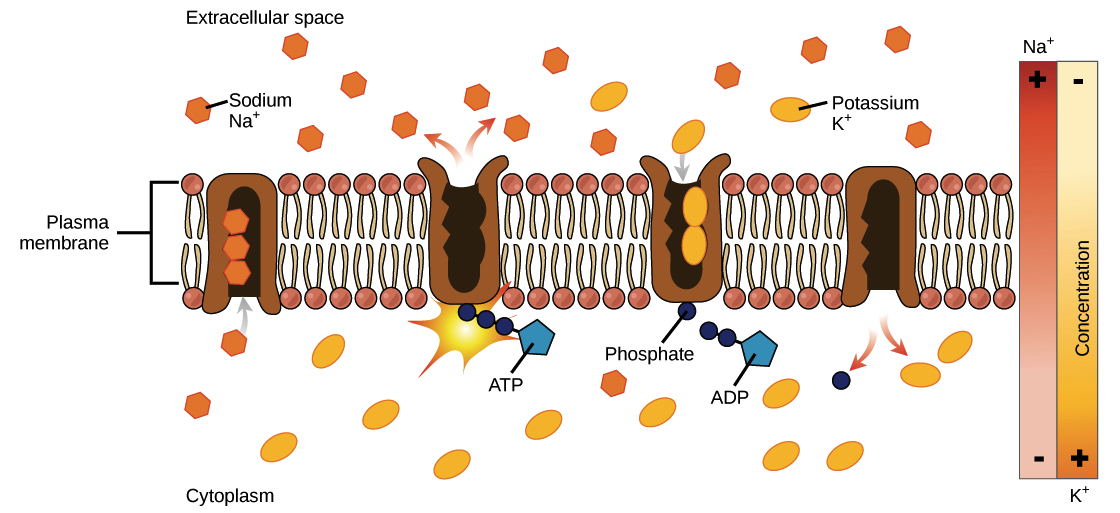Transport across the Plasma Membrane

Transport across the plasma membrane, also known as cell membrane, occurs through various mechanisms that allow the movement of ions, molecules, and other substances into and out of the cell. These transport mechanisms are essential for maintaining cell homeostasis and facilitating communication with the external environment. The main types of transport across the plasma membrane include:
-
Passive Transport:
- Diffusion: Diffusion is the movement of molecules from an area of higher concentration to an area of lower concentration. It occurs spontaneously down the concentration gradient until equilibrium is reached. Substances such as oxygen, carbon dioxide, and lipid-soluble molecules can diffuse directly through the lipid bilayer of the membrane.
- Facilitated Diffusion: Facilitated diffusion involves the movement of molecules across the membrane with the help of transport proteins, such as channels or carriers. These proteins facilitate the passive movement of specific molecules, such as ions and polar molecules, down their concentration gradients. Facilitated diffusion does not require energy expenditure and follows the concentration gradient.
-
Active Transport:
- Primary Active Transport: Primary active transport utilizes energy from ATP hydrolysis to actively transport molecules or ions against their concentration gradients. The transport protein, such as an ion pump (e.g., sodium-potassium pump), undergoes conformational changes that allow it to bind and transport specific substances across the membrane. This process maintains concentration gradients and is essential for cell functions such as maintaining membrane potential and ion balance.
- Secondary Active Transport: Secondary active transport utilizes the energy stored in the electrochemical gradient established by primary active transport to drive the movement of other substances across the membrane. Cotransporters or symporters transport two substances simultaneously in the same direction or in opposite directions. For example, the sodium-glucose cotransporter (SGLT) transports glucose against its concentration gradient using the energy from sodium ions moving down their gradient.
-
Bulk Transport:
- Endocytosis: Endocytosis is the process by which cells internalize extracellular substances by engulfing them in vesicles formed from the plasma membrane. There are different types of endocytosis, including phagocytosis (cell eating), pinocytosis (cell drinking), and receptor-mediated endocytosis (specific uptake of ligands bound to receptors).
- Exocytosis: Exocytosis is the process by which cells release substances from intracellular vesicles into the extracellular environment. It involves the fusion of vesicles with the plasma membrane, resulting in the secretion of the vesicle contents outside the cell.
These transport mechanisms collectively regulate the movement of substances across the plasma membrane, maintaining cell homeostasis and facilitating various cellular processes such as nutrient uptake, waste removal, cell signaling, and communication with the external environment.
Thank you,
